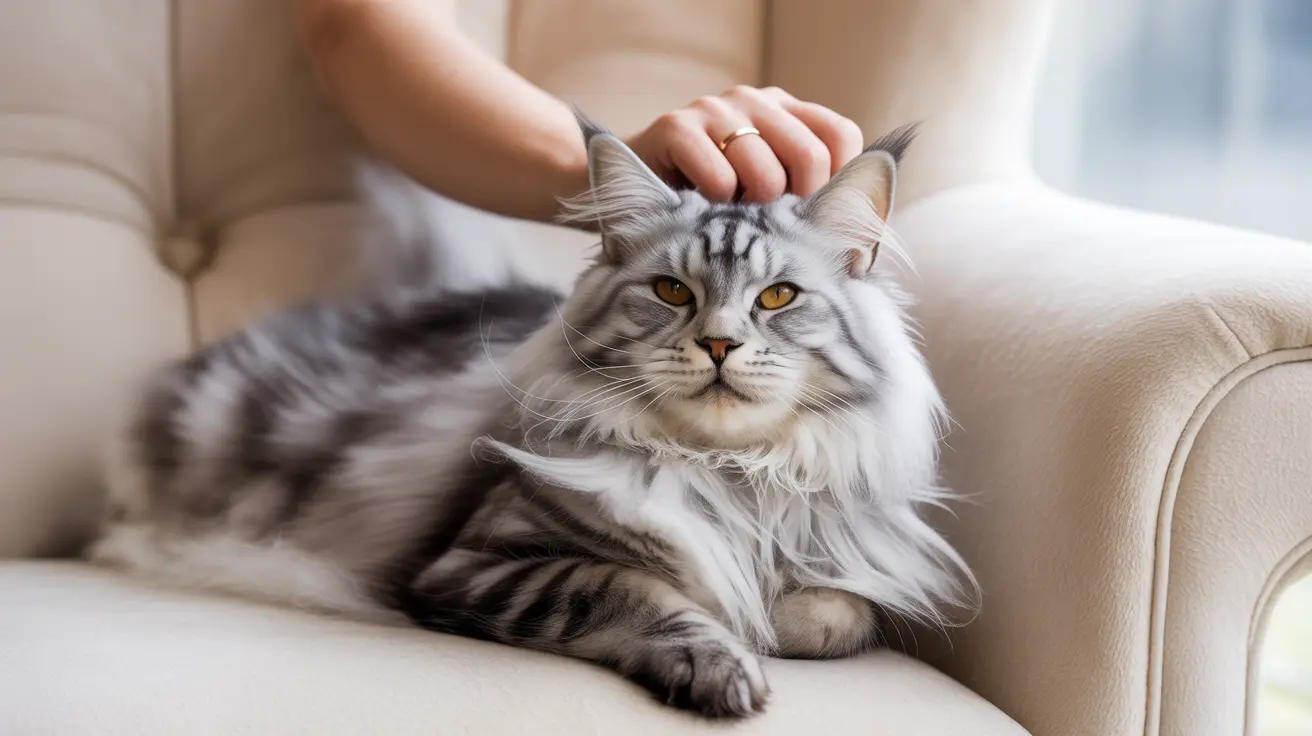The Science Behind Ear Rubs
Cat ears are remarkably complex organs, featuring over 30 muscles that allow for precise movement and exceptional hearing capabilities. The outer ear area is packed with sensitive nerve endings and blood vessels, making it highly responsive to touch. When you gently rub a cat's ears, you're stimulating these nerve endings in a way that can trigger several pleasurable responses.
During ear rubs, cats release endorphins and oxytocin - often called "feel-good hormones." These natural chemicals promote relaxation, reduce stress, and create feelings of happiness and contentment. This biological response explains why many cats become visibly relaxed or even drowsy during ear rubs.
The Role of Scent Glands
Cat ears contain important scent glands that play a crucial role in feline communication. When you rub your cat's ears, you're helping them mark their territory and spread their unique scent. This natural marking behavior makes them feel secure and satisfied in their environment.
The act of marking through ear rubs also has evolutionary significance, as it helps cats establish their presence and create familiar territories. This is why many cats actively seek out ear rubs - it's not just about physical pleasure, but also about maintaining their scent signature in their space.
Social Bonding and Early Life Experiences
Many cats develop a fondness for ear rubs during kittenhood when their mothers groom them. This early positive association with ear touching creates a lasting comfort response that carries into adulthood. When you rub your cat's ears, you're essentially mimicking this maternal care behavior.
Additionally, ear rubbing can serve as a form of social bonding between cats and their human companions. It's a way for cats to show trust and receive attention, much like the mutual grooming behavior observed between cats in the same family group.
Signs Your Cat Enjoys Ear Rubs
Cats are excellent communicators when it comes to showing what they like and dislike. Common signs that your cat is enjoying ear rubs include:
- Purring contentedly
- Leaning into your touch
- Slow blinking
- Relaxed body posture
- Staying still or moving closer
- Head butting your hand
When to Be Cautious
While many cats love ear rubs, it's important to be aware of potential health issues. If your cat suddenly becomes more interested in ear rubs or shows signs of discomfort, they might be experiencing:
- Ear mites
- Infections
- Allergies
- Inflammation
Always check with your veterinarian if you notice excessive scratching, head shaking, or unusual discharge from your cat's ears.
Frequently Asked Questions
Why do cats like having their ears rubbed and how does it make them feel?
Cats enjoy ear rubs because of the concentrated nerve endings in their ears that make touching pleasurable. The stimulation releases endorphins and oxytocin, creating feelings of relaxation and contentment. It also reminds them of maternal grooming from kittenhood.
How can I tell if my cat enjoys or dislikes ear rubs?
Cats that enjoy ear rubs will purr, lean into your touch, and maintain relaxed body language. Signs of discomfort include ear flattening, moving away, tail swishing, or growling. Always respect your cat's preferences and body language.
Can rubbing my cat's ears help with ear infections or itchiness?
While gentle ear rubs might provide temporary relief from itchiness, they're not a treatment for medical conditions. If your cat shows signs of ear problems, consult a veterinarian for proper diagnosis and treatment.
What is the best way to rub my cat's ears safely and comfortably?
Start with gentle strokes at the base of the ears and observe your cat's reaction. Use light pressure and avoid the inner ear area. Follow your cat's cues and stop if they show any signs of discomfort.
How do cats' ear anatomy and scent glands affect their preference for ear rubs?
Cats' ears contain numerous nerve endings and scent glands. When rubbed, these glands release pheromones that help mark territory and create a sense of security. The complex ear anatomy makes this area particularly sensitive to touch and pleasurable when stimulated appropriately.






